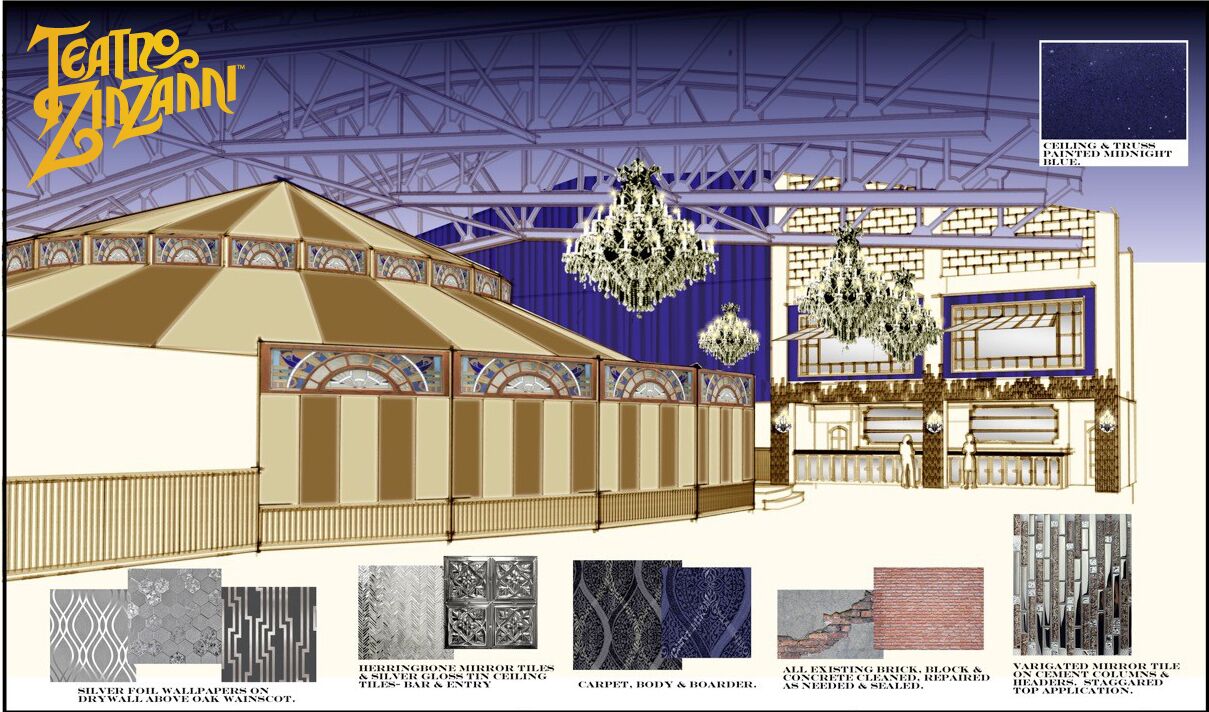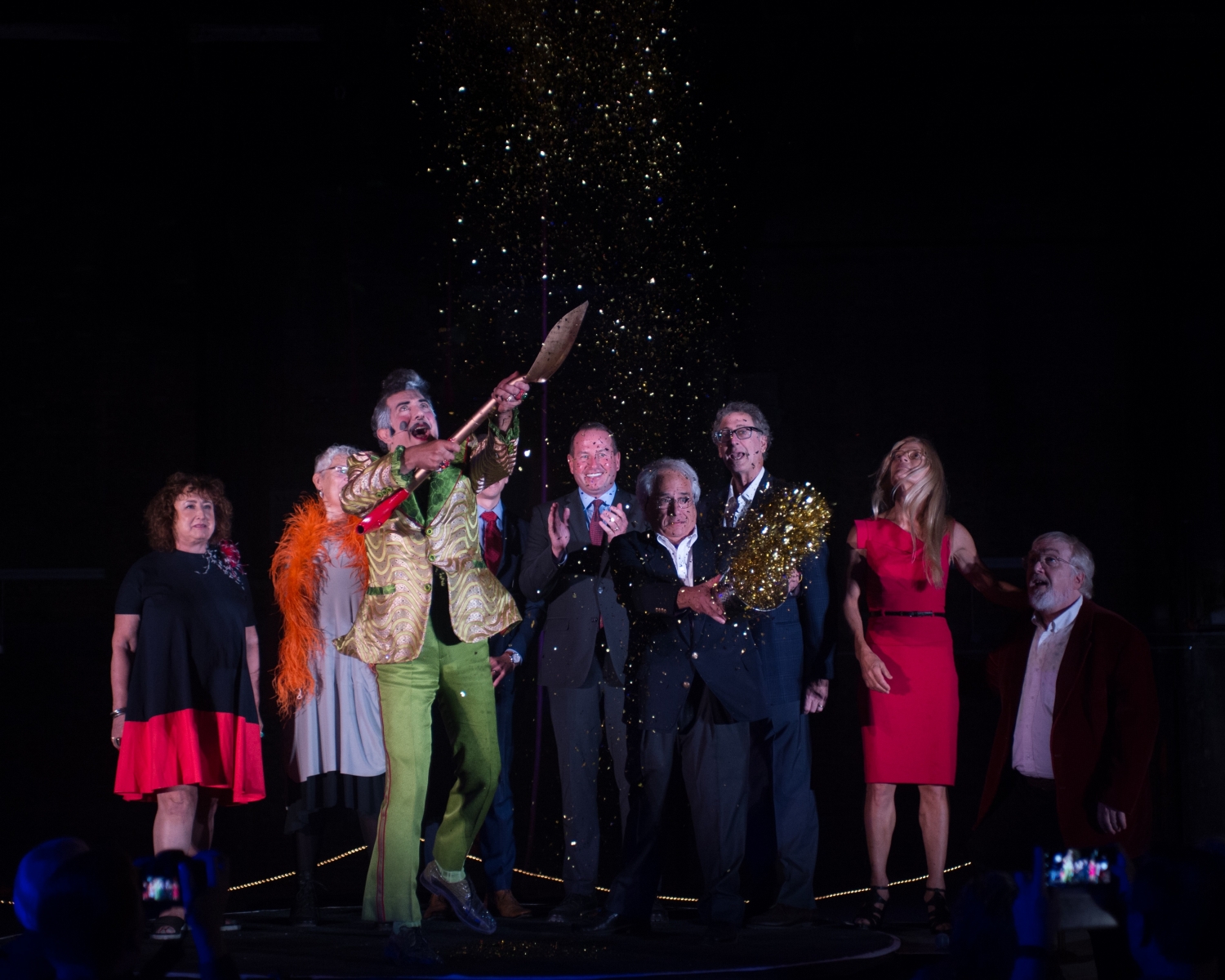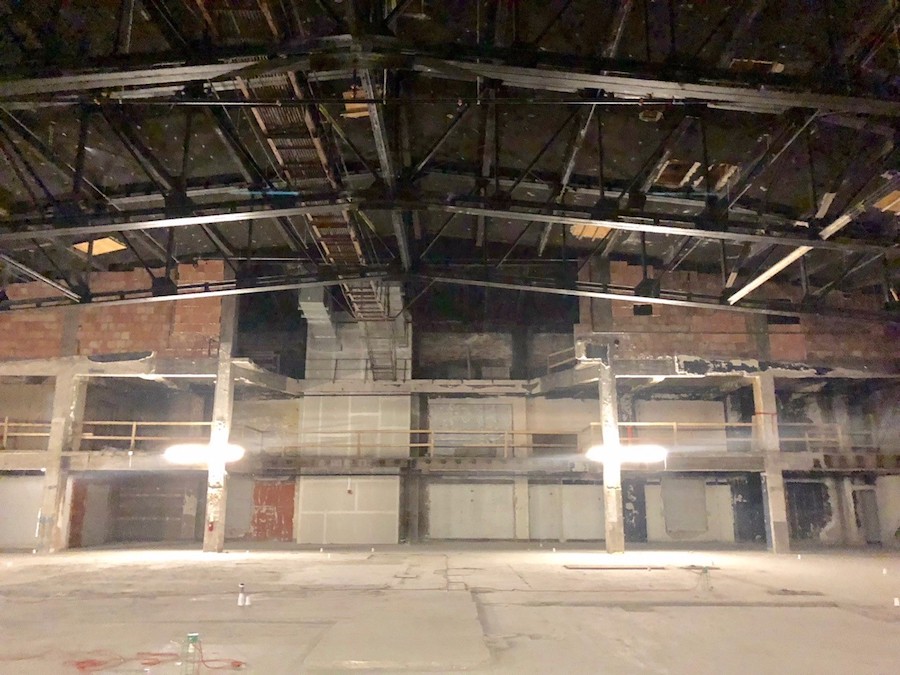Earlier this fall, the West Coast circus dinner theater Teatro ZinZanni announced plans to open an outpost in Chicago next spring. ZinZanni, which combines Cirque du Soleil–style acrobatics, comedy, and cabaret with high-end meals, has been running for two decades in its native Seattle, and will also open another outpost in San Francisco. It will pitch a 330-seat spiegeltent in Chicago in April, with a dinner menu designed by Goddess and Grocer’s Debbie Sharpe.
Just as surprising as ZinZanni’s announcement is the location where it'll set up shop: not in a giant parking lot outside the United Center, but in a cavernous, long-forgotten enclosure in the Cambria Hotel on Randolph Street, right in the Loop.
“As I walked into that space, [I] just went, ‘Where did this come from?’” lead producer Stanley Feig said in a phone interview after the announcement. “It took my architect all of 30 seconds to look and go, 'Yeah, we could do this.''”

The Cambria Hotel's facade rises 22 stories, but the ZinZanni space sits atop the building’s shorter rear stack. The bottom eight stories are occupied by Broadway in Chicago’s Oriental Theatre; to get to ZinZanni, you take an express elevator up to the 14th floor, where ZinZanni's three-story space matches the footprint of the 2,200-seat Oriental below it — without the benefit of support beams. Feig had been scouting Chicago for nearly a decade for a spot that could house ZinZanni year-round. But he didn't know to look above the Oriental Theatre until Broadway in Chicago president Lou Raizin gave him a call.
“Being the theater operator in the building below, Lou is aware of everything that goes on in there," says Feig. "When the space was revealed, he immediately connected the dots.”
So how did nobody know about a huge vacant loft in the heart of the Loop? Turns out, it had been converted for office space decades ago, with eight-foot drop ceilings hiding its true dimensions. The State of Illinois had been the most recent occupant, Feig says, and no one suspected what it had until renovations began for the Cambria’s 2017 opening.
“I suspect,” he says, “anyone who knew it was there is no longer with us.”

I did some digging into historical records and newspaper archives to see what I could find on the massive hall's former life. It's no secret that the Oriental Theatre, and the building that rises above it, were designed by C.W. and George Rapp, the sibling architects responsible for all sorts of Chicago movie palaces, including the Chicago Theatre, the Cadillac Palace Theatre, the Uptown, and the Riviera.
What’s less remembered is the building’s original identity as a Masonic temple. Different sources between 1926 and 1946 call it the United Masonic Temple or the New Masonic Temple. It was “new” because the Freemasons moved there from Burnham and Root’s original Chicago Masonic Temple a block east at State and Randolph, which was completed in 1892 (it was razed in 1939, and the Joffrey Ballet building now stands on its site).
The building’s 1978 nomination form for the National Register of Historic Places hints at the true nature of the floors above the Oriental, though they were by then chopped up into offices:
The new Masonic building is a masterpiece of engineering. Noteworthy here is the fact that the Oriental Theatre occupies floors 1 through 8 of the rear of the building. Built directly over the theater are four Masonic halls on the 9th floor, three halls on the 10th floor, two on the 12th floor, and one as large as the theatre itself on the 14th to 16th floors. The fact that there are eight stories (10 auditoriums), all with no visible support, directly above the theatre which throughout its whole interior contains no visible supports, is certainly a tribute to Rapp and Rapp's engineering abilities.
That top hall was in its earliest incarnation a 1,900-seat auditorium, the bones of which could still be seen in raw form at ZinZanni’s mock groundbreaking event in September (it involved a shovel, tossed glitter, and extravagant costumes).
And the space hosted more than Masonic rites. While there’s no evidence of legitimate theater being staged there, the Tribune archives offer examples of the kinds of public events that did take place there in the ’20s and ’30s. Display ads inform readers of a “free lecture on Christian Science by John W. Doorly, C.S.B., of London, England” and a Salvation Army–sponsored appearance by “Commander Evangeline Booth, one of the world’s greatest women speakers.”
In 1929, the John Marshall Law School held its commencement ceremony in the auditorium, prompting the headline “FIVE WOMEN GET DEGREES AS LAW CLASS GRADUATES.” In 1938, a once-thriving Swedish fraternal organization took over the hall for a pageant celebrating the 300th anniversary of the first Swedish colony in America; the cast was some 350 strong.
But my favorite tale out of the Masonic building assembly hall is chronicled in a January 16, 1928 Tribune story headlined, “MASKED ORATOR FINDS CHICAGO A SINFUL CITY.” It details a sensational lecture by “a black robed, black hooded figure” to an audience of 800. Introduced by the Rev. Philip Yarrow, superintendent of the “Illinois Vigilance Association,” the masked man claimed to be an ex-Secret Service agent who had immersed himself in Chicago’s underworld for the last eight years.
“I have stalked through every dive in the city. I have visited Cicero’s dens of iniquity. I have played poker with the brother of Al Capone,” our hero had pronounced. The un-bylined Trib reporter, possibly hinting at their own mild amusement, describes the educational portion of the evening: “Argot was explained to them. ‘Grand,’ the man in the mask declared, meant $1,000. And a ‘C-note’ was $100. Such phrases as ‘racket,’ ‘put the finger,’ and ‘make a squawk’ were interpreted.”
And then the reporter returns to quoting the speaker: “Chicago has sold her soul for pleasure. Old Rome in all its licentiousness was never like this city. There are more seats in Loop theaters than in all the churches in the city.”
One can only imagine what the masked orator would think of dinner and a circus taking over his stage.



